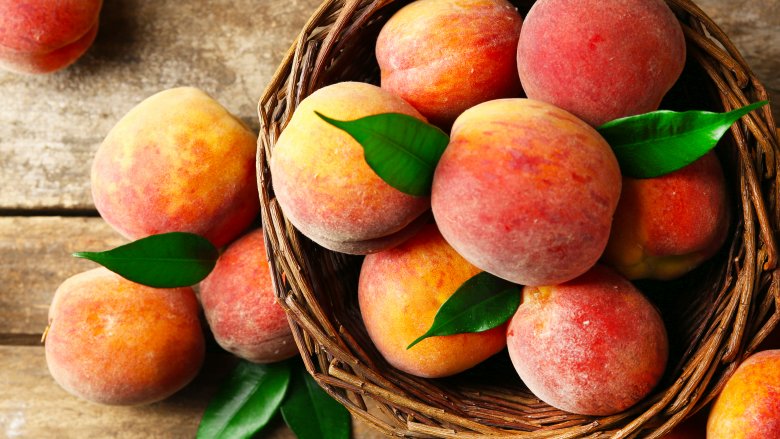The Real Reason Peaches Are Fuzzy
Peaches are instantly recognizable, not only by how they look and taste, but by how they feel. This delectable fruit has a gorgeous color and features a fuzzy skin — not a smooth one like many other fruits and vegetables. While some people don't mind the fuzz, others do and will either peel it off or buy something else. But really, though, why are peaches fuzzy anyway? Because when you think about it, it really is kind of odd.
As it turns out, the peach has tender skin that can be affected by moisture, such as rainwater, and the fuzz on its skin naturally protects it (via Three Springs Fruit Farm). The fuzz is actually made up of tiny hairs that hold drops of water aloft and away from the sensitive skin of the fruit. Without the benefit of the fuzz, peaches would be exposed to excess water and could rot faster than it would was it not a hairy fruit.
HuffPost reports that peach fuzz is also thought to be a natural deterrent to fruit-loving insects, which is another bonus, not only to growers and grocers, but for those who aren't keen on finding an unwelcome inhabitant in their fruit.
Peaches have a pit (which is actually called a stone), and are either known as freestone or clingstone. Freestone peaches are exactly like their name sounds — the flesh of the fruit doesn't cling to the pit, and it separates easily when cut apart. Clingstone peaches, though, cling to their pits and are more difficult to eat.
Interestingly, nectarines are basically the same fruit as peaches — they've just been adapted from peaches using a natural mutation that renders its skin smooth instead of fuzzy. Not only do nectarine trees look identical to peach trees, you can sometimes find peaches and nectarines growing on the same tree.
Peach fuzz, then, is a natural defensive trait that helps the fruit stay fresh, rot-free, and insect-free,
